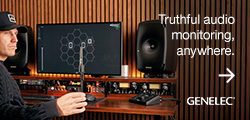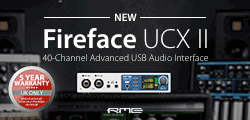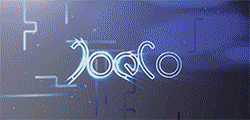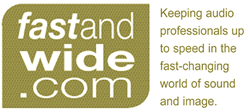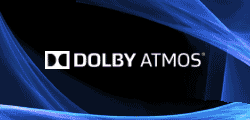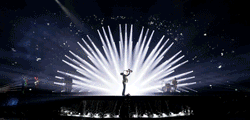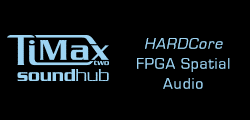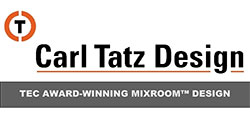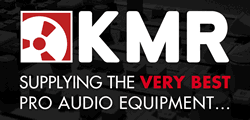![]() Where the original 1979 production of Pink Floyd’s The Wall cost around £1m and was so big that it was only staged in three cities, its 2011 counterpart is reckoned to have cost £37m and has been performed a total of 120 times at venues around North America and Europe.
Where the original 1979 production of Pink Floyd’s The Wall cost around £1m and was so big that it was only staged in three cities, its 2011 counterpart is reckoned to have cost £37m and has been performed a total of 120 times at venues around North America and Europe.
The new version of the show is the current touring vehicle for writer and former Floyd founder/bass player Roger Waters, and draws on new 3D animation, pyrotechnics and effects.
The tour finished with three performances in at the 2004 Olympic Stadium in Athens. These were also filmed by a crew of nearly 100 people, making this the biggest European concert film project for nearly 30 years. The video for The Wall Live In Athens was shot principally on 4K high-definition cameras but video services company Panavision also provided the crew with a new 5K super-high-definition unit.
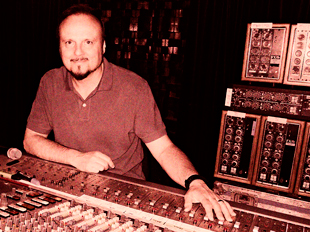 Waters called in long-time Pink Floyd producer James Guthrie to handle the sound recording and mixing. Guthrie, in turn, called in the pioneering expertise of Prism Sound to help build a mighty 96-track, 96kHz fully-mirrored Sadie recording set-up modelled on the set-up in his private studio, on the shore of Lake Tahoe in California.
Waters called in long-time Pink Floyd producer James Guthrie to handle the sound recording and mixing. Guthrie, in turn, called in the pioneering expertise of Prism Sound to help build a mighty 96-track, 96kHz fully-mirrored Sadie recording set-up modelled on the set-up in his private studio, on the shore of Lake Tahoe in California.
‘James is a perfectionist who has a passion for clean and transparent recording,’ Prism Sound Sales Director Graham Bowell explains. ‘For this project, he used the Le Voyageur II mobile with the 48-channel Neve V-Series analogue recording console onboard the truck, but this time recordings were captured using the Sadie digital multitrack recorders interfaced through Prism Sound ADA-8XR AD-DA converters.
'For monitoring, he used Le Voyageur’s ATC units, another brand that he favours.’
In Athens, Waters spread his performance across two stages – a main stage and another stage outside the wall – with audio lines switching between the two at various points during the concert to reduce channel count. A total of 96 tracks were recorded, distributed between the main 64-track Sadie system and a smaller Sadie LRX2 system running 32 tracks. All of the tracks were recorded at 96kHz, 24-bit resolution.
Alongside the Neve console were 16 additional channels of outboard Neve (1073 and 1081) preamplifiers, provided by London-based FX Rentals. These were boosted by the addition of 16 channels of Prism Sound Maselec Master Series MMA-4XR mic preamps. Two separate Neve 16:2 mixers (also courtesy of FX Rentals) were used ahead of the V-series console to help contain the total number of recording tracks.
Audience and venue ambience were captured using a SoundField MkV microphone system, loaned for the project bySoundField CEO, Ken Giles. The mic output was recorded in four-channel B-format for decoding to stereo or surround formats during postproduction. The top 32 tracks on the Sadie LRX2 unit captured, among other things, playback of SFX and pre-recorded orchestral mixes, these sources feeding the quad speaker setup. In addition, the LRX2 recorded a number of audience mics plus click tracks and show time code.
The main 64-track system comprised two identical Sadie H128 dual Madi units, each running Raid mirrored drive pairs, making four clones of all takes. The Sadie units were connected to the Prism Sound ADA-8XR units through two RME ADI6432 Madi-AES interfaces. The audio recording system was locked to video using a black burst video reference at 25 fps generating a locked 96kHz word clock reference that was distributed to all units.
The main vocal channels – including Roger Waters’ main mics and his radio mic – were handled by Prism Sound Maselec MLA-2 dual-channel compressors on console insertion points. Extra UA 1176 compressors were loaned by Dinos Ioanides from Sierra Studios in Athens to cover extra channels.
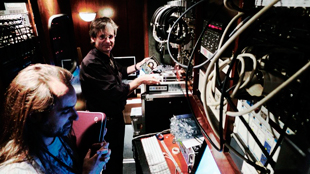 ‘Prism Sound provided Sadie expert Mark Overall as an additional resource to work alongside James Guthrie’s long-time collaborator, Joel Plante,’ Boswell says. ‘Mark normally looks after build and test of Sadie hardware systems at our HQ, but he has experience of field-based recording and film work gained with Sadie and the former business Spaceward Graphics on a variety of projects spanning television, film and music projects.’
‘Prism Sound provided Sadie expert Mark Overall as an additional resource to work alongside James Guthrie’s long-time collaborator, Joel Plante,’ Boswell says. ‘Mark normally looks after build and test of Sadie hardware systems at our HQ, but he has experience of field-based recording and film work gained with Sadie and the former business Spaceward Graphics on a variety of projects spanning television, film and music projects.’
The recording involved three live shows and three days of filming for close-ups over six days. During recording, the 1Tb mirrored drives from the main Sadie systems were changed every two days and the main and back-up disk sets were dispatched separately for security in transit.
Waters has updated the show from its original form, drawing on a wide range of recent material including the war in Iraq, the alleged atrocities perpetrated by allied troops in the Gulf conflict and the shooting of Jean Charles de Menezes at Stockwell tube station in London. It also uses new orchestral music mixes and a quadraphonic sound system. Gerald Scarfe’s animations, rejuvenated with digital technology, played their part. The wall itself was built brick by cardboard brick, using a total of nearly 400.
‘The audience in Athens certainly seemed to identify with The Wall’s message, perhaps more so as a result of the recent protests about the economy.’ Boswell says. ‘It really is a matter of interpretation, but I felt there was a clear message about avoiding tribalism and not isolating ourselves from the people and things we irrationally fear.’
Having been extended four times already, the show now looks set to return to the US.
More: www.sadie.com
More: www.prismsound.com




